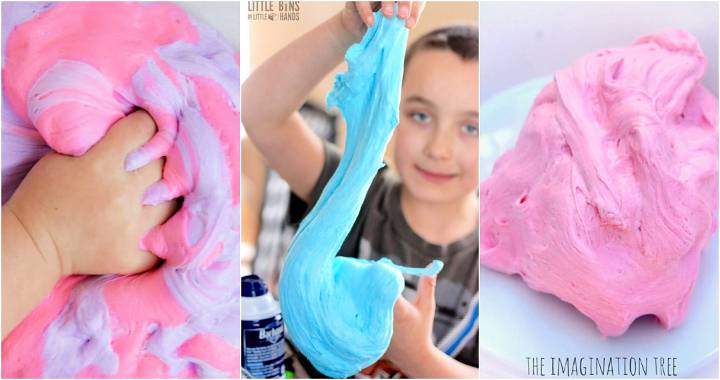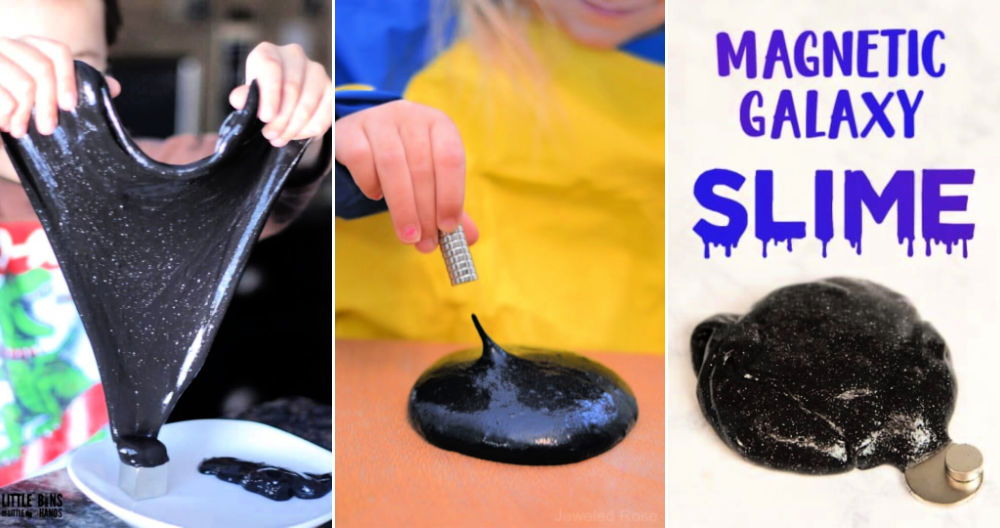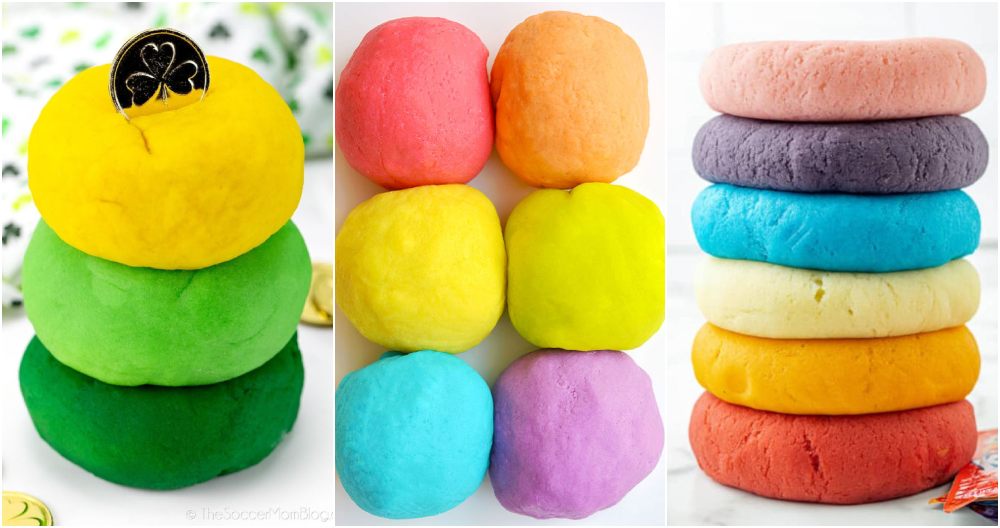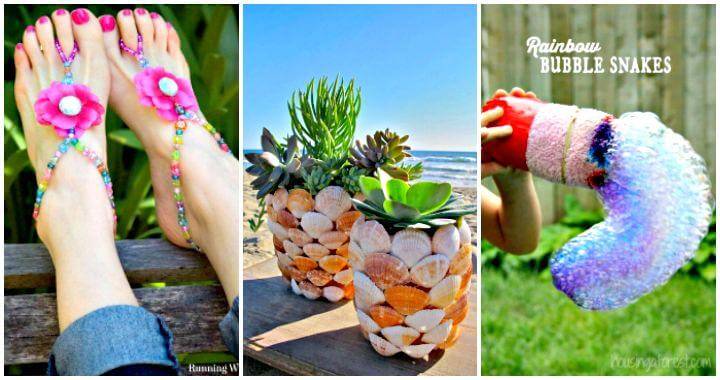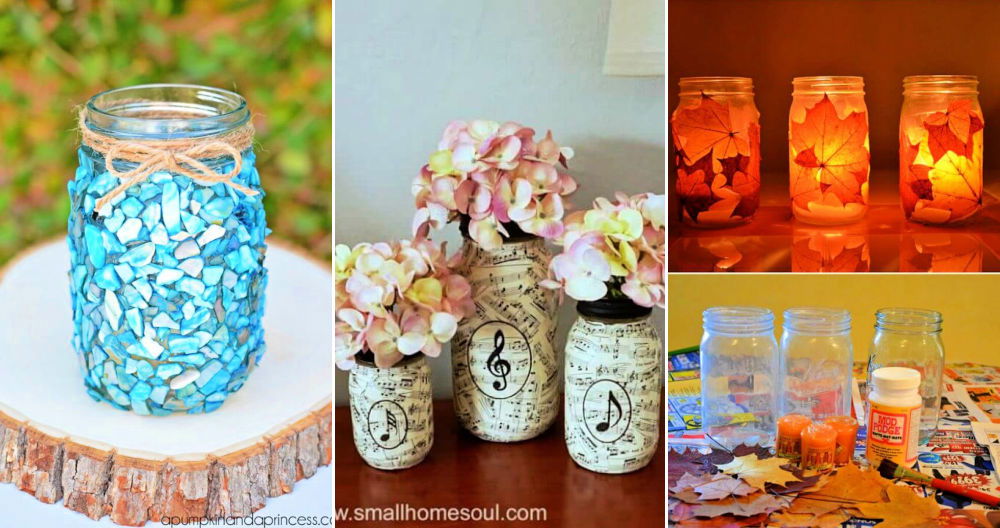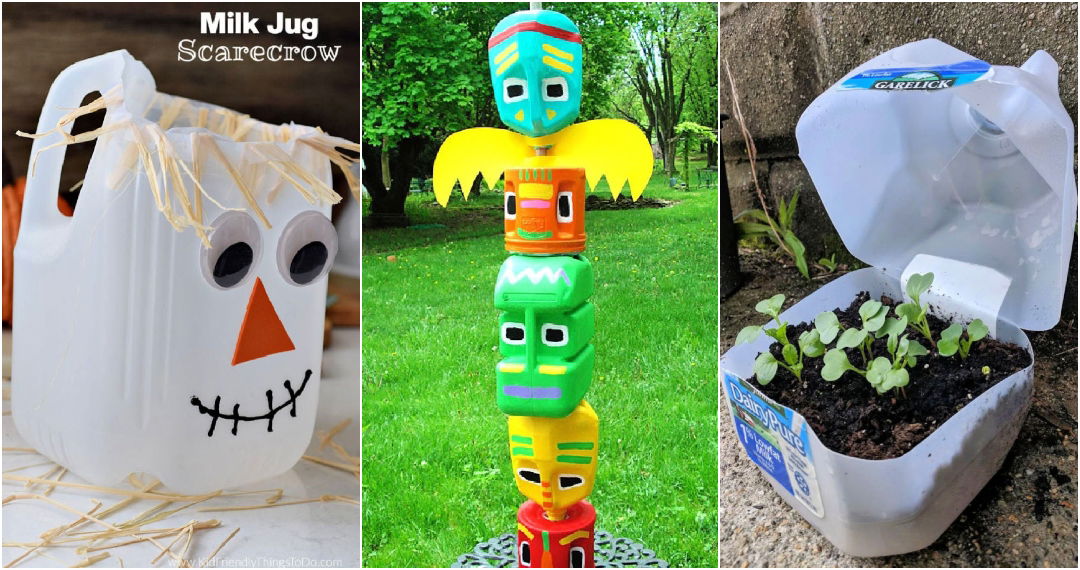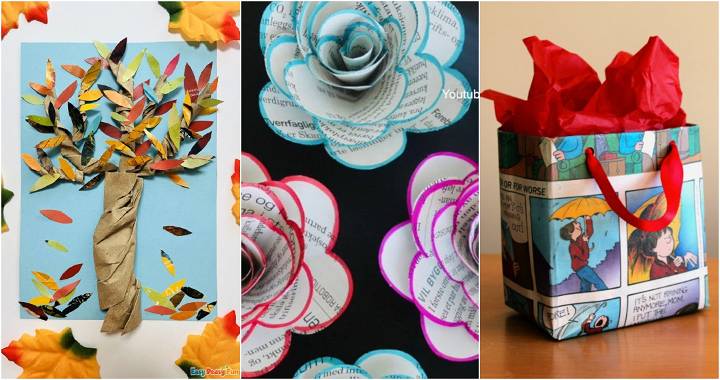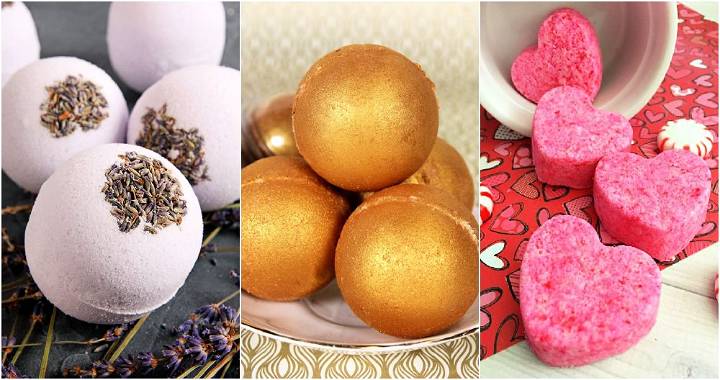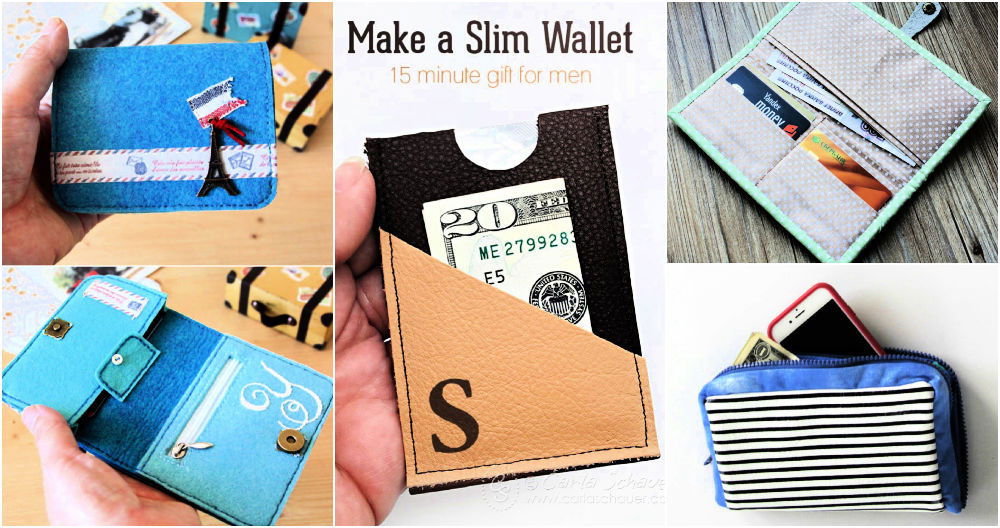Making homemade slime is a fun and creative activity that kids and adults alike can enjoy. With 25 homemade slime recipes to choose from, this guide is perfect for those ready to dive into the fun of making their own slime creations. Tailored to provide clear instructions, these DIY slime recipes promise a rewarding experience. You'll find everything you need to know about the materials, steps, and tips for achieving that perfect slime consistency.
If making slime has piqued your interest, you're in the right place. From the basic ingredients to the final product, we'll walk you through the guide of how to make slime, ensuring you have all the information at your fingertips.
What's more, the recipes cater to a variety of preferences, including options without Borax for safer play. Get ready to stir up some fun as we guide you through the world of making DIY slime. Let's get started on this gooey adventure!
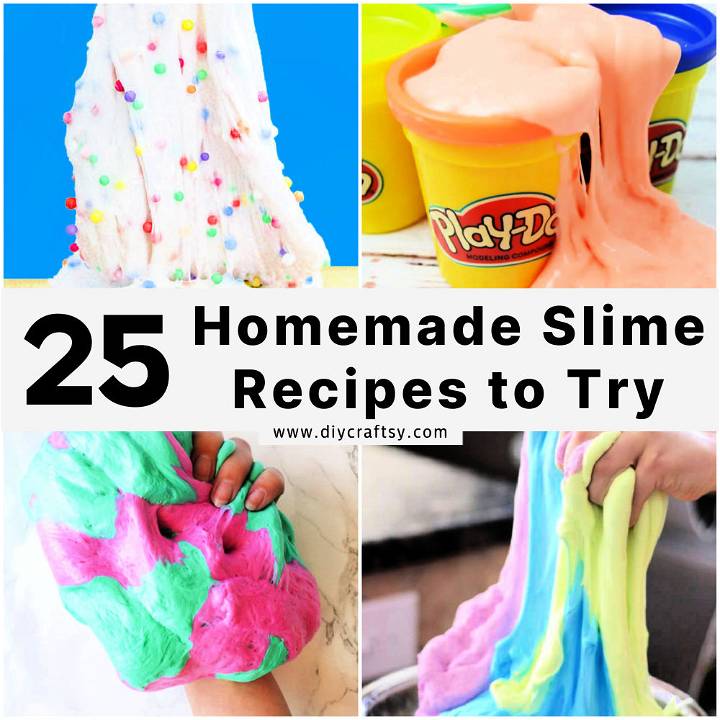
Why Make Homemade Slime?
Making homemade slime is not just a fun and engaging activity; it also offers a range of benefits for both kids and adults. Here's why you should consider diving into the world of slime-making:
- Creativity Boost: Crafting slime allows for endless creativity. Whether you're mixing colors, adding glitter, or experimenting with textures, the possibilities are infinite. This activity encourages imagination and can be a great way for kids to express themselves.
- Educational Value: Slime making is a hands-on science experiment. It introduces basic chemistry concepts in a fun and accessible way. Children learn about the properties of different ingredients and how they interact to form a new substance.
- Sensory Play: Slime offers a unique sensory experience. Its gooey, stretchy texture can be soothing and provide a calming effect. This type of play is important for sensory development and can help improve focus and fine motor skills.
- Family Bonding: Making slime is a fantastic activity for family bonding. It’s an opportunity for parents and children to work together, share ideas, and enjoy each other's company in a relaxed setting.
- Affordability: Most slime recipes require simple, inexpensive ingredients that you might already have at home. This makes it an affordable way to provide hours of entertainment.
- Safety: Homemade slime can be made without harsh chemicals like Borax, making it safer for little hands. Always supervise kids during the slime-making process to ensure a safe and enjoyable experience.
Homemade slime is much more than just a playful goo; it's a creative, educational, and bonding activity that's both safe and budget-friendly.
How to Make Slime
Making slime at home can be a fun and satisfying DIY project, especially if you're new to the craft. Slime making is not only an entertaining activity but it also introduces basic principles of science in a hands-on way. The following guide is designed to help beginners make their very first batch of slime successfully, using a simple, no-fail recipe.
Ingredients and Tools You'll Need:
- 1 cup of warm water
- 1/2 teaspoon of Borax (found in the cleaning aisle of most supermarkets)
- PVA School Glue (e.g., Elmer’s School Glue)
- Acrylic paint or food dye (optional for coloring)
- Bowl
- Spoon for mixing
- Squeezy bottle (optional)
- Measuring spoons
- Airtight container for storage
Step 1: Make Your Slime Activator
- Prepare the Activator Solution: Start by adding 1 cup of warm water to a jug or bowl. To this, add 1/2 teaspoon of Borax.
- Mix until Dissolved: Stir the mixture until the Borax is completely dissolved. This solution acts as your slime activator, transforming the glue into slime.
- Transfer to a Squeezy Bottle (Optional): For easier application, you can transfer the activator solution into a squeezy bottle. Make sure to label it clearly as "activator".
Step 2: Mix the Base for Your Slime
- Pour Out the Glue: In a separate bowl, pour out the entire bottle of PVA school glue.
- Add Color (Optional): If you want colored slime, now is the time to add a few drops of food dye or a bit of acrylic paint to the glue. Mix it well until the color is uniform.
Step 3: Transform the Glue into Slime
- Add the Activator: Slowly start adding your slime activator to the glue mixture, squeezing in just a little bit at a time while continually stirring.
- Mix and Observe: Continue to stir the mixture slowly. You'll notice it beginning to thicken and turn into a slime texture. Add the activator gradually to avoid making the slime too rubbery.
- Knead by Hand: Once the slime starts pulling away from the sides of the bowl and forming a cohesive mass, begin kneading it with your hands to bring it all together.
Step 4: Storing Your Slime
To ensure your slime stays fresh and playable for as long as possible, store it in an airtight container when not in use.
Slime Making Tips:
- The amount of activator needed can vary, so add it slowly and observe the consistency.
- If the slime is too sticky, add a tiny bit more activator. If it’s too rubbery, you’ve added too much.
- Feel free to experiment with different colors and even add-ins like glitter or small beads for texture.
Video Tutorial
For a step-by-step video tutorial on making slime for beginners, watch this YouTube video: Easy DIY Slime Recipe!
It pairs well with this written guide, bringing the process to life and demonstrating each step in a manner that's easy to follow.
Making slime at home doesn't have to be complicated or intimidating. With this simple recipe, you're well on your way to making your own slime with ease. Enjoy the process and have fun experimenting with different variations.
Understanding the Science of Slime
Slime isn't just fun to play with—it's also a fascinating subject that brings science to life right in your own kitchen. Let's dive into the science behind slime, making complex concepts accessible for everyone.
Polymers: The Building Blocks of Slime
At its core, slime is all about polymers. Polymers are long chains of molecules, like a string of pearls. These chains can be found in many materials we use daily, from plastic bottles to the DNA in our bodies. When you make slime, you're essentially creating a polymer out of your ingredients.
Cross-linking: Connecting the Chains
The magic of slime happens through a process called cross-linking. Think of cross-linking like building a ladder between two long strings. When you add an activator to your slime mixture (commonly something containing borax or liquid starch), it acts as the rungs of the ladder, connecting the polymer chains. This process transforms your mixture from a liquid into the ooey-gooey slime we all love.
Viscosity: The Flow of Slime
Have you noticed how slime can flow like a liquid but also stretch like a solid? This unique behavior is due to its viscosity. Viscosity is a measure of a fluid's resistance to flow. Slime has a high viscosity, meaning it doesn't flow as easily as water but isn't as rigid as a solid. By adjusting the amount of activator or the type of glue, you can change the slime's viscosity, making it thicker or runnier.
The Educational Adventure of Slime-Making
Creating slime isn't just fun; it's a hands-on way to explore important scientific concepts. We encourage you to dive deeper into the topics of polymers, cross-linking, and viscosity with slime-making activities. It's a fantastic opportunity for learners of all ages to see science in action.
Experiment with different recipes, adjust the ingredients, and observe how these changes affect the slime's properties. Each batch of slime is a new adventure in learning, showing us the incredible world of polymers and the fascinating science that makes our world work.
So, the next time you're kneading and stretching your homemade slime, remember—you're not just playing. You're stepping into the role of a scientist, exploring the building blocks of the material world. Happy slime-making!
Safety Precautions and Tips for Making Homemade Slime
Making homemade slime is a fun and creative activity for kids and adults alike. However, safety should always be the top priority, especially when children are involved in the process. Below are essential safety measures and tips to ensure a safe and enjoyable slime-making experience.
Adult Supervision
Always have an adult present when making slime, especially if children are involved. Adults can help read instructions, measure ingredients accurately, and handle any steps that might be risky for kids.
Use Non-Toxic Ingredients
- Choose Safe Ingredients: Opt for non-toxic, child-friendly ingredients for slime making. Many slime recipes call for basic household items like baking soda, glue, and contact lens solution, which are generally safe when used correctly.
- Read Labels: Carefully read labels of all ingredients and products used to make slime. Avoid ingredients with harsh chemicals or warnings about skin irritation.
Proper Ventilation
- Work in a Well-Ventilated Area: Chemical reactions involved in slime making can sometimes produce fumes, especially if using ingredients like borax. Ensure the room is well-ventilated, or consider working outdoors if the weather permits.
Handling Slime
- Wash Hands: Always wash hands before and after playing with slime to avoid transferring dirt and germs.
- Avoid Contact with Eyes and Mouth: Stress the importance of not touching the face while handling slime to prevent irritation or ingestion.
- Skin Sensitivity: For individuals with sensitive skin, consider wearing disposable gloves while making and playing with slime.
Cleaning Up
- Immediate Cleanup: Clean any spills immediately to avoid slips and stains. Use warm soapy water for most surfaces and fabrics.
- Proper Storage: Store slime in an airtight container to prevent drying out and to keep it away from younger children and pets.
In Case of Accidents
- Eye Contact: In case slime gets into the eyes, rinse immediately with plenty of water and seek medical advice if irritation persists.
- Ingestion: If slime is accidentally ingested, do not induce vomiting. Offer sips of water and seek medical attention.
By following these safety measures and tips, making homemade slime can be a fun and safe activity for everyone involved. Always prioritize safety, especially when experimenting with new recipes or ingredients.
DIY Slime Storage and Longevity
Storing your homemade slime properly is key to keeping it fresh, stretchy, and enjoyable for as long as possible. Whether you're a seasoned slime maker or new to this squishy sensation, here are some helpful tips on how to store your slime, prevent it from drying out or becoming too sticky, and revive old or hardened batches.
Choosing the Right Container
Airtight Containers: The best option for storing slime is in an airtight container. This could be a plastic container with a snap-on lid or any container that seals tightly. The airtight environment keeps the slime from drying out and prevents air from turning your perfect slime into a hard, unplayable mess.
Airtight Bags: If you're short on space or want to store smaller amounts of slime, airtight bags are a great alternative. Squeeze out as much air as possible before sealing to keep the slime moist and ready to play with anytime.
Labeling Your Slime
It's important to label your containers or bags, especially if you're making different types of slime or if slime-making is a frequent activity in your household. Include the date the slime was made and the type of slime. This helps in tracking how long the slime lasts and identifying your favorite recipes for future reference.
Tips for Storing Slime
- Keep it Cool: Store your slime in a cool, dry place away from direct sunlight. Heat can make the slime sticky, while direct sunlight can change its color and texture.
- Separate Colors: If you have slime in different colors, store them separately to prevent the colors from blending together.
- Avoid Mixing: Store different types of slime separately. Slimes with different textures or ingredients might not play well together and can become a sticky, unusable mess.
Reviving Old or Hardened Slime
Slime doesn't last forever, but there are a few tricks to try before you throw away old or hardened slime:
- For Sticky Slime: If the slime has become too sticky, try kneading in a little bit of activator (the solution you used to turn the glue into slime) or baby oil. Do this gradually until you reach the desired consistency.
- For Hardened Slime: Add a few drops of warm water to the slime and knead it in. If the slime is still hard, you can soak it in a bowl of warm water for a few minutes before kneading. Repeat this process until the slime softens.
Remember, the key to long-lasting slime is proper storage and care. By following these tips, you can enjoy your homemade slime for weeks, or even months, after you've made it. Happy sliming!
Color Mixing and Customization
Creating different colors of slime is an exciting way to customize your slime-making experience. Whether you prefer using food coloring or acrylic paint, both options allow for a wide range of creative possibilities. Below, you'll find tips on how to mix colors effectively and a basic color guide to get you started on achieving specific shades.
Mixing Colors with Food Coloring or Acrylic Paint
Food Coloring: A popular choice for slime, food coloring is safe and easy to use. Start with a basic color set: red, yellow, blue, and green. Mixing these primary colors in various combinations can produce a vast array of shades.
Acrylic Paint: If you're aiming for more vibrant, opaque colors, acrylic paint is a fantastic option. It's slightly thicker than food coloring, so start with small amounts to avoid altering the slime's texture too much.
Basic Steps:
- Prepare Your Slime: Before adding color, make sure your slime is mixed and ready. It should be clear or white to ensure the colors blend well.
- Add Color Gradually: Begin with a few drops of food coloring or a small dab of acrylic paint. It's easier to darken a light color than to lighten a dark color.
- Mix Thoroughly: Fold and stretch the slime to evenly distribute the color. Keep adding color gradually until you reach your desired shade.
- Evaluate and Adjust: If the color isn't quite right, adjust by adding more of the original colors or introducing another color to shift the shade.
Color Chart for Specific Shades
- Pink: Red + White (For lighter pinks, use more white and less red)
- Orange: Red + Yellow (Adjust the amounts to get the perfect shade)
- Purple: Blue + Red (Vary proportions for lavender to deep purple)
- Green: Blue + Yellow (Alter ratios for everything from lime to forest green)
- Teal: Blue + Green + White (Start with a blue and green mix, then lighten with white)
- Brown: Red + Green (Mix equal parts for a basic brown, adjust as needed)
Experimenting with Color Combinations
The most exciting part about coloring slime is the chance to create your own unique colors. Here are a few tips to spark your creativity:
- Pastel Shades: Add a tiny bit of color to white slime for soft, pastel hues.
- Neon Colors: Use vibrant food coloring or neon acrylic paints for electric shades.
- Metallics: Some paints come in metallic finishes. Mixing these into your slime can create a cool, shimmering effect.
- Glow-in-the-Dark: Incorporate glow-in-the-dark paint for a slime that shines brightly in the dark.
Remember, successful color mixing requires patience and experimentation. Start with small amounts and gradually build up to your desired shade. Mix different colors to create unique combinations. Have fun with it! Your slime reflects your creativity, so let it shine!
Eco-Friendly Slime Options
Making slime at home is not only a fun and engaging activity but also an excellent opportunity to promote environmental awareness. By choosing eco-friendly alternatives to traditional slime ingredients, you can enjoy this creative pastime while minimizing your ecological footprint. Let's explore how you can make your slime-making process more sustainable through biodegradable glues, natural colorants, and sustainable packaging.
Biodegradable Glues
Choosing the Right Glue: The base of most homemade slime recipes is glue. Opting for biodegradable glues made from natural materials not only reduces the strain on our environment but also ensures a safer experience, especially for kids. Brands are increasingly offering eco-friendly options that serve as perfect alternatives for making slime.
DIY Glue Recipes: For those who love a hands-on approach, making your glue at home can be a fulfilling part of the slime-making process. Simple ingredients like flour, water, sugar, and vinegar can be cooked together to form a natural, biodegradable glue. This method adds a touch of personalization and satisfaction to your eco-friendly slime-making adventure.
Natural Colorants
Harnessing Nature's Palette: Synthetic dyes are common in slime recipes but pose environmental concerns. Nature, however, offers a bounty of colorants that can add vibrancy to your slime without the environmental cost. Ingredients like beetroot powder for red, spirulina for green, and turmeric for yellow not only color your slime beautifully but also make the process safer and more eco-friendly.
Innovative Color Solutions: Exploring natural colorants encourages creativity. For instance, using butterfly pea flower tea can create a stunning blue slime that changes color to purple when acidic ingredients like lemon juice are added. This not only makes for an environmentally friendly choice but also introduces an element of science and magic into your slime-making.
Sustainable Packaging
Eco-Friendly Storage Options: Storing your slime in plastic containers contradicts the effort of making it eco-friendly. Glass jars and beeswax wraps present sustainable alternatives that are not only better for the environment but also add an aesthetic value to your homemade slime. Glass jars are reusable and easily cleaned, while beeswax wraps offer a biodegradable solution that keeps slime fresh.
Reusing and Recycling: Promote eco-friendly practices by encouraging the reuse of containers for slime storage. Old food jars can be cleaned and repurposed, reducing waste and fostering a culture of recycling and reusability. Educating about and implementing such practices enhances the eco-friendly spirit of homemade slime making.
Making eco-friendly slime at home is fun and caring for the planet. Choosing biodegradable materials and sustainable packaging ensures a safe and enjoyable experience while helping the environment. Embrace these practices for responsible fun.
Understanding Slime Science
Slime isn't just a fun, gooey substance to play with—it's also a fascinating subject for scientific exploration. At its core, slime demonstrates key scientific concepts like viscosity, the nature of non-Newtonian fluids, and elasticity. By diving into these concepts, we can understand why slime behaves the way it does under different conditions.
Exploring Viscosity and Non-Newtonian Fluids
Viscosity refers to a fluid's resistance to flow. Honey, for example, has a higher viscosity than water. Slime is interesting because it doesn't behave like a typical liquid—it's a non-Newtonian fluid. This means its viscosity changes under stress or force, making it neither a solid nor a traditional liquid.
Experiment 1: Observing Slime’s Viscosity
Objective: See how slime’s viscosity allows it to act like both a solid and a liquid.
What You’ll Need:
- Homemade slime
- A bowl
- A spoon or your hands
Procedure:
- Place the slime in a bowl. Observe its shape.
- Pick up the slime and let it run through your fingers back into the bowl.
- Now, punch the slime quickly with your fist.
Observations:
- When left alone, slime spreads out slowly, showing its liquid-like property.
- When allowed to run through your fingers, it stretches and flows like a thick liquid.
- Upon punching, it feels solid, demonstrating its solid-like property under sudden force.
Exploring Elasticity
Elasticity is the ability of a material to return to its original shape after being stretched or compressed. Slime is elastic to a degree, which is why it can be stretched and then bounce back.
Experiment 2: Testing Slime's Elasticity
Objective: Understand how slime can stretch and return to its original shape.
What You’ll Need:
- Homemade slime
Procedure:
- Take a small piece of slime and stretch it out slowly to see how far it can go before breaking.
- Now, mold it into a ball and drop it from a height to observe its bounciness.
Observations:
- The slime stretches to a point because of its elasticity.
- When dropped, it deforms upon impact but slowly regains shape, showing elasticity.
The Science Behind Slime's Behavior Under Different Conditions
Slime's unique properties come alive under different conditions, such as heat, cold, and pressure.
Experiment 3: Slime Under Heat and Cold
Objective: See how temperature affects slime's viscosity.
What You’ll Need:
- Homemade slime
- Refrigerator
- Warm water
Procedure:
- Divide your slime into two parts.
- Place one part in the refrigerator for 30 minutes.
- Warm the other part by placing it in a sealable bag and submerging it in warm water for a few minutes.
- After adjusting the temperatures, remove both and observe their behaviors by stretching.
Observations:
- The cold slime becomes stiffer, harder to stretch—cold increases its viscosity.
- The warm slime becomes runnier, easier to stretch—heat decreases its viscosity.
Slime explores scientific principles through experiments like viscosity, non-Newtonian fluids, and elasticity.
FAQs on Making Homemade Slime
In this section, we've compiled some of the most frequently asked questions about making slime at home. Whether you're a beginner or looking for advanced tips, you'll find helpful answers to get you started or refine your slime-making skills.
What ingredients do I need to make basic slime?
To make a simple batch of slime, you generally need:
- PVA school glue
- A slime activator (Borax solution, contact lens solution with baking soda, or liquid starch)
- Warm water
- Optional: food coloring or acrylic paint for color
Can I make slime without Borax?
Yes, you can make slime without Borax. Alternatives include using contact lens solution that contains boric acid and sodium borate, or liquid laundry starch. Both serve as safe activators to turn glue into slime.
Is homemade slime safe for kids?
Homemade slime can be safe for kids with the right supervision and ingredients. Avoid using harsh chemicals and make sure younger children are not putting slime in their mouths. Always supervise the slime-making process and playtime.
How do I prevent my slime from being too sticky or too rubbery?
- Too Sticky: Add a little more activator solution, a small amount at a time, until you reach the desired consistency.
- Too Rubbery: If the slime feels tough and loses its stretch, you've likely added too much activator. Adding a tiny bit of warm water can help soften it.
How should I store my slime, and how long will it last?
Store your slime in an airtight container to keep it from drying out. When stored properly, homemade slime can last for several weeks. If you notice any changes in texture or smell, it's time to make a new batch.
Can I add extras to my slime?
Absolutely! Feel free to experiment by adding:
- Glitter
- Food coloring
- Beads
- Foam balls
- Scented oils (a few drops for a pleasant smell)
These additions can make your slime more personalized and fun.
My slime is too hard. How can I fix it?
If your slime has hardened, try kneading it with your hands to warm it up and add a small amount of warm water. Mix slowly until the slime becomes softer. If this doesn't work, it might be time to start a new batch.
Can slime be eco-friendly?
Yes, you can make eco-friendly slime by choosing biodegradable glitter and natural colorings. Additionally, look for PVA glue that is labeled as non-toxic and environmentally safe.
Is it possible to make slime without glue?
Yes, there are recipes for glue-free slime that use ingredients like cornstarch and shampoo or cornstarch and conditioner mixed with water. These alternatives often result in a different texture but can still provide fun sensory play.
By addressing these questions, we hope you feel more prepared and excited to start your slime-making journey. Happy crafting!
25 Homemade Slime Recipes to Try (How to Make Slime)
Discover 25 homemade slime recipes to try with this comprehensive guide on how to make slime at home. Get creative with these fun and easy DIY slime recipes!
1. Easy DIY Fluffy Slime
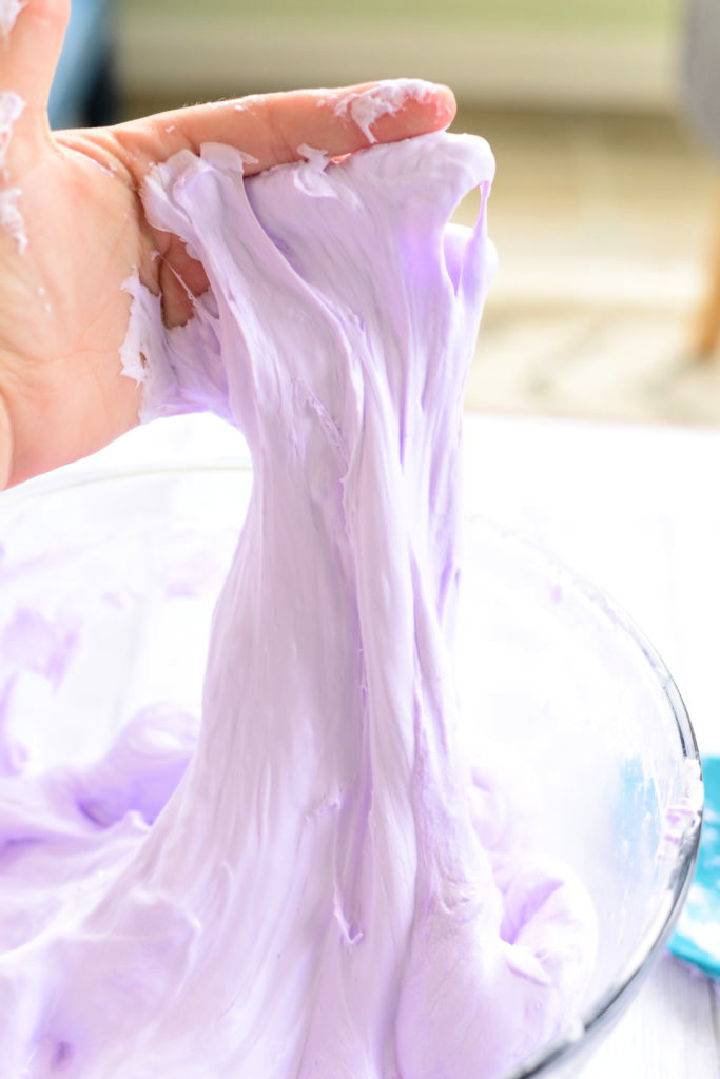
Embarking on a craft adventure? Make your crafting session fun and mess-free with a DIY Easy Fluffy Slime tutorial from Ten at the Table. Perfect for a playful and sensory experience, fluffy slime is not only simple to craft but also a joy for kids to explore and adults to watch. Follow these step-by-step instructions involving common household items to make your own batch of colorful, fluffy slime. Dive right in for a crafting experience that promises stretchy, shiny fun for days!
2. Homemade Fluffy Slime
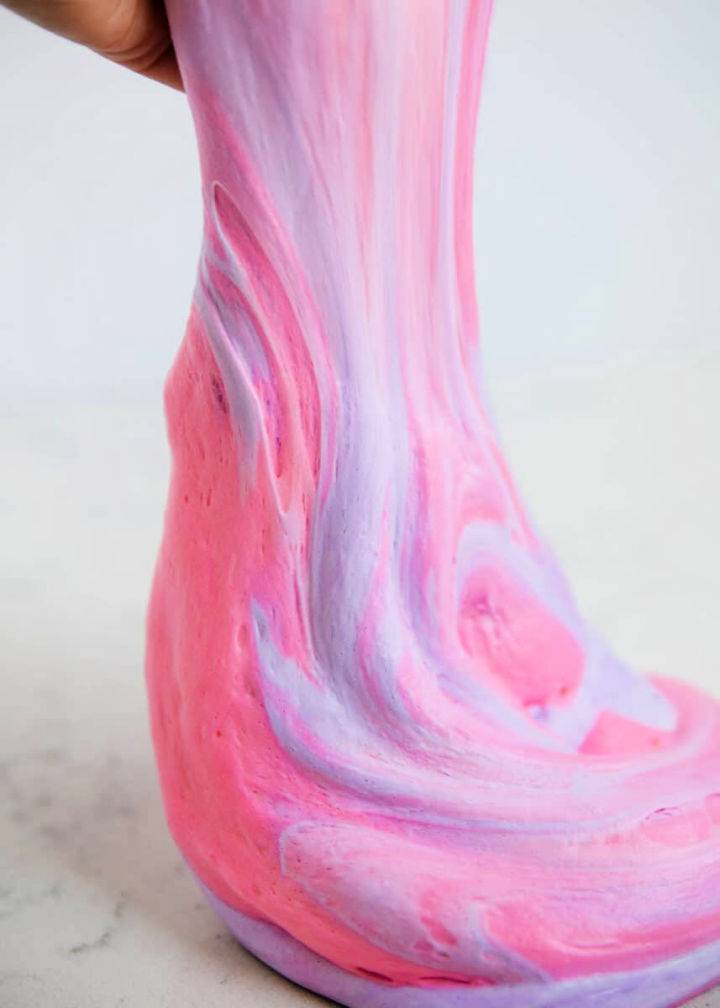
Looking for a fun and easy indoor activity for kids? I Heart Naptime offers a fantastic guide on how to craft super soft and stretchy fluffy slime with just three ingredients! Perfect for rainy days or anytime your kids need an engaging project, this recipe promises hours of fun.
It's wonderfully simple, requiring less than 5 minutes to whip up a batch of this magical substance. Plus, it's made without borax, making it a safer option for little hands. Ready to dive into the squishy, colorful world of slime making? Follow this straightforward tutorial for an afternoon filled with creative play!
3. How to Make a Fluffy Slime
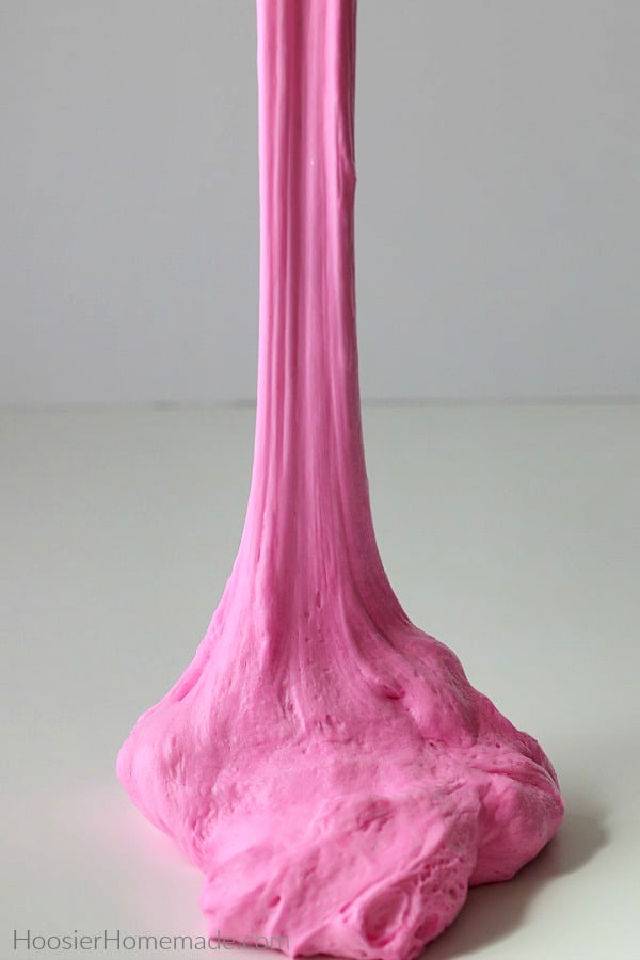
Unlock the magic of crafting Fluffy Slime at home with a simple guide from Hoosier Homemade. Dive into a fun activity that promises loads of hands-on enjoyment without the use of Borax. This recipe showcases how, with just a few ingredients like shaving cream, glue, and contact solution, you can make a fluffy delight that's perfect for kids' playtime.
Perfect for art classes, playdates, or even as a unique party activity, learn the ins and outs, from mixing to kneading, to achieve the perfect fluffy consistency. Engage in a safe, creative play with a recipe that's easy to follow and sure to bring out countless smiles!
4. Make a Slime With Bubble Bath
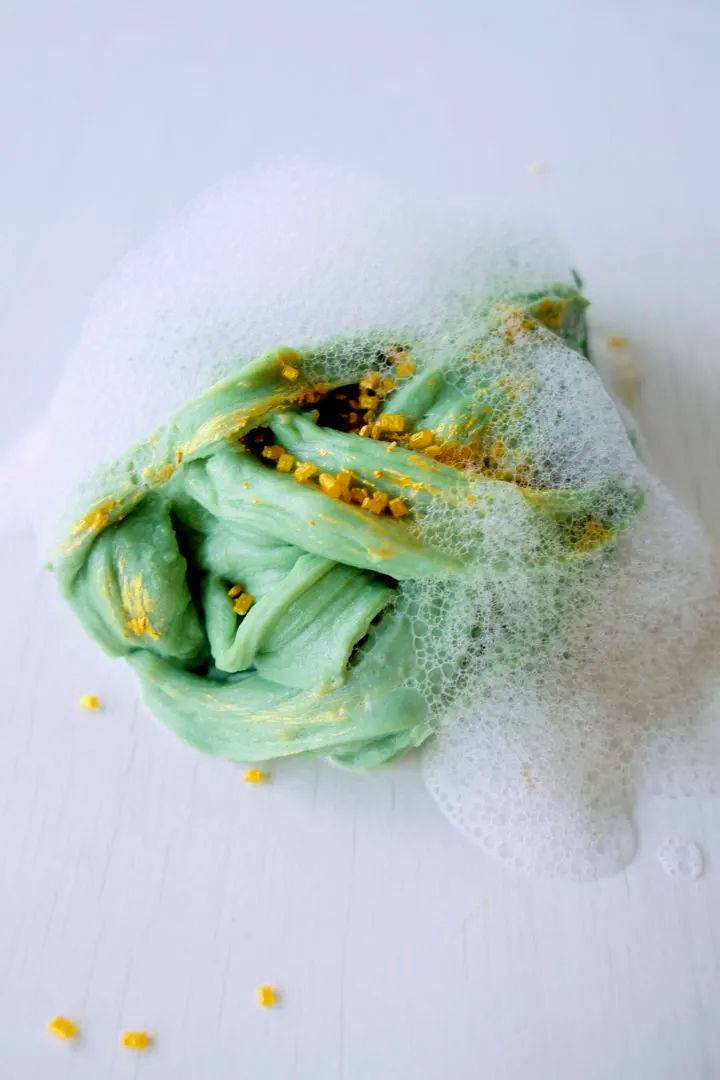
Discover how to craft your very own DIY Slime using Bubble Bath with a glue-free recipe! Perfect for a safe and fun crafting experience, this tutorial uses simple, customizable ingredients. Learn to strike the perfect balance with cornstarch for a non-sticky, malleable dough that transforms into gooey slime with just a splash of water. Ideal for gifts or personal use, this recipe promises hours of creative play. For detailed instructions, visit The Makeup Dummy.
5. Best DIY Fluffy Slime
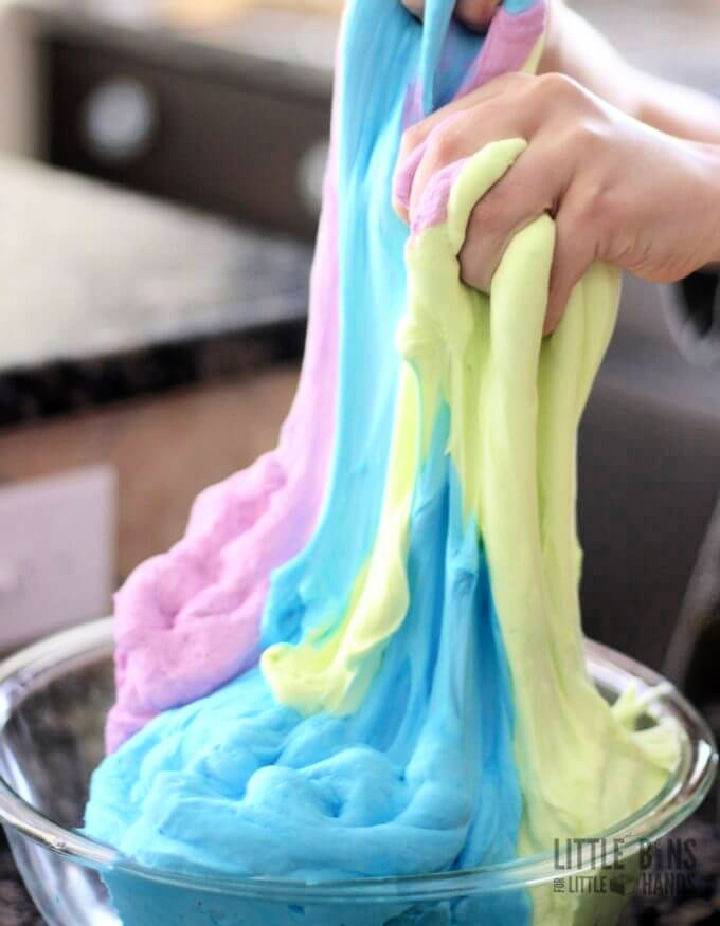
Dive into the playful world of slime-making with our comprehensive Fluffy Slime Recipe. Perfect for hands-on fun, this guide simplifies making fluffy slime at home, using items like shaving foam and saline solution. Ideal for adding a creative twist to seasonal celebrations, this activity is not just engaging but educational, exploring the science behind slime. Follow our easy steps for a stretchy, squishy experience and discover how to keep your slime at its best. Plus, delve into our themed recipes for year-round slime-making adventures.
6. Glitter Slime Recipe Safe for Kids
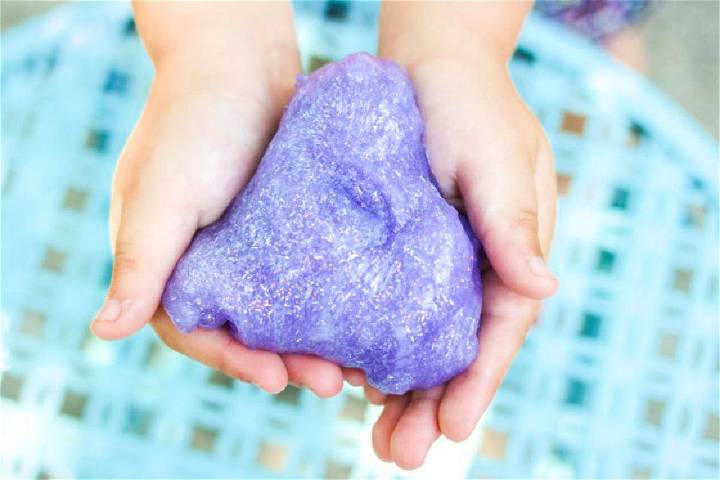
Unlock the magic of mess-free, glittery fun with a safe and simple glitter slime recipe perfect for kids. Ideal for playtime, this easy-to-follow guide ensures a great, non-sticky experience. This teaches children the joy of making with their hands while keeping cleanup to a minimum. Safe, enjoyable, and educational - discover how to blend creativity and safety in one delightful package.
7. Homemade Scented Rainbow Floam Slime
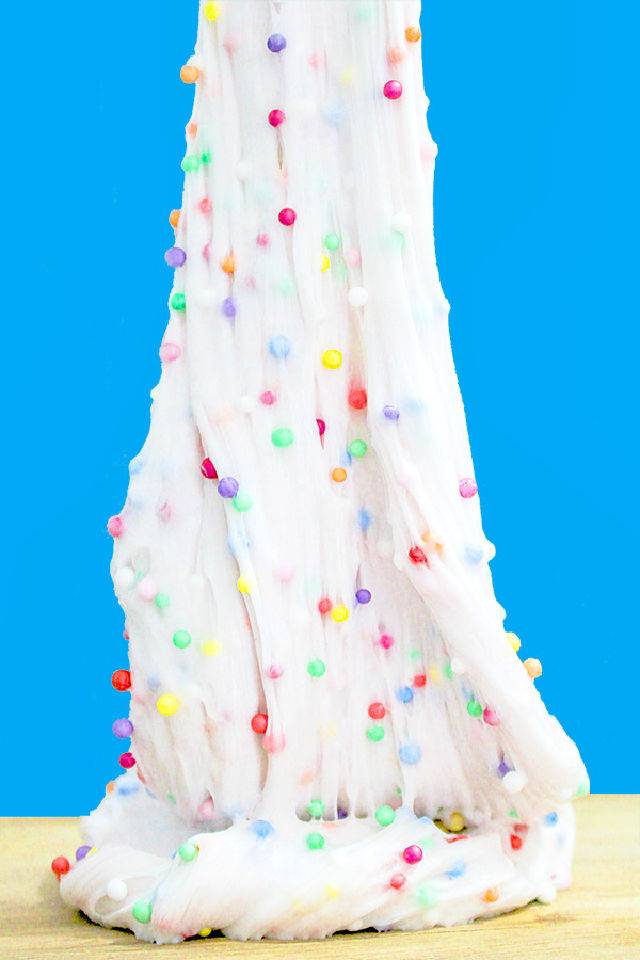
Dive into a sensational crafting experience with our guide to making scented rainbow floam slime! It's not only visually captivating but also engages the senses with its unique texture and delightful vanilla scent. Perfect for sensory play, this crunchy slime variant promises endless amusement.
Ideal for those exploring the joys of slime making, our instructions are simple and straightforward, ensuring an enjoyable crafting session. For comprehensive details and assistance, dive into our full guide. Remember, safety first: adult supervision is paramount during both creation and play.
8. Make Your Own Slime
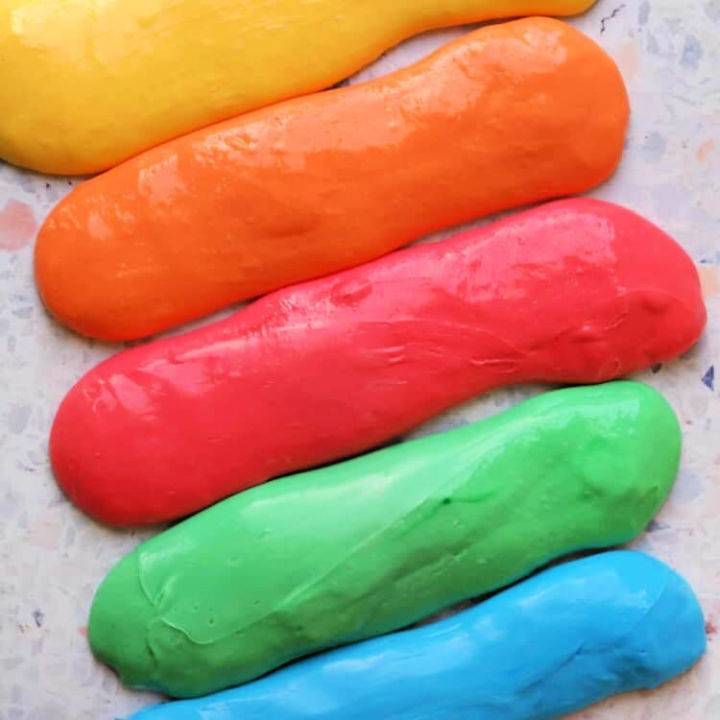
Discover a simple and engaging way to make homemade slime with just a few ingredients! Perfect for a fun science experiment or a creative indoor project, making slime can be incredibly satisfying. All you need is glue, baking soda, and contact solution.
Optional: add food coloring to make your slime vibrant and unique. It's essential to follow the instructions carefully, especially regarding the type of contact solution used. For a detailed guide and more exciting slime recipes, visit ChildhoodMagic.com. Get ready to mix, knead, and enjoy endless hours of slimy fun!
9. 2 Ingredients Oobleck Recipe
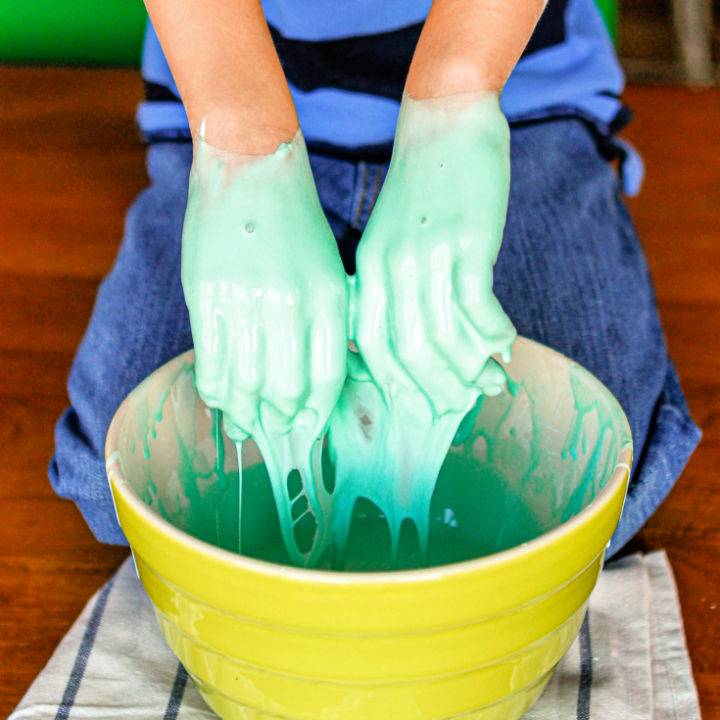
Discover the joy of homemade oobleck with a simple 2-ingredient recipe from Unsophisticook. Perfect for a fun science experiment or a Dr. Seuss-themed activity, this oobleck recipe is budget-friendly and uses common pantry items. Learn how to mix cornstarch and water to make a fascinating non-Newtonian fluid that's solid under pressure and liquid at rest. Ideal for engaging kids of all ages, it promises a delightfully messy time and easy cleanup. Follow along for an entertaining learning experience!
10. Making a Slime With Contact Solution
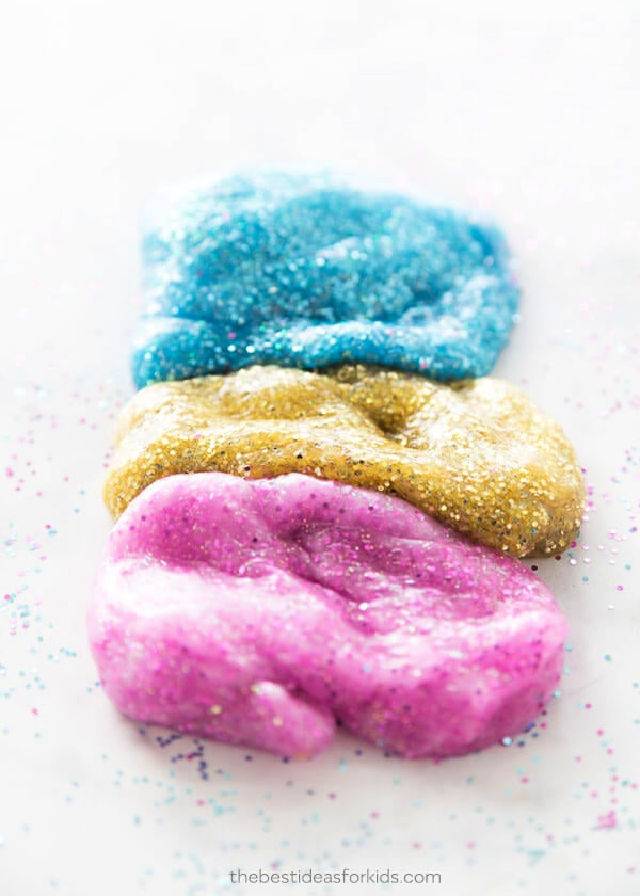
Dive into a fun and easy DIY slime project! Crafting your own slime with contact solution is not only simple but also safer than many other methods, as it doesn't require borax. Perfect for crafters of all ages, this method involves just a few household ingredients.
For a successful and mess-free experience, follow the step-by-step guide provided by The Best Ideas for Kids. Discover how mixing Elmer’s glue, baking soda, and contact solution can lead to hours of stretchy, glittery fun. Remember, adult supervision is recommended to ensure a safe crafting session.
11. Easy to Make Slime
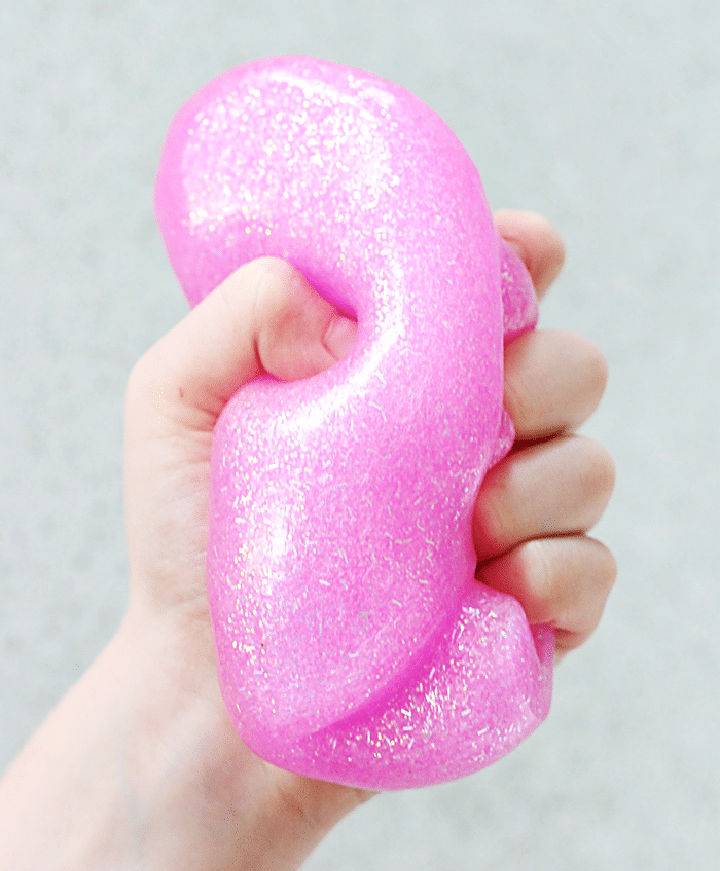
Embark on a crafting adventure with your little ones and wave goodbye to boredom with our simple 3-ingredient slime recipe! Safe for kids and infinitely fun, this glitter slime doesn't just shimmer; it ignites hours of imaginative play. Avoid the mess and hazards of traditional recipes by following our quick guide at Somewhat Simple.
Discover how household items like baking soda and contact solution can transform into stretchy, sparkling slime. Perfect for sibling sharing, this recipe is easily adjustable for families of any size. Ready in minutes, this DIY slime promises endless entertainment and creativity for all!
12. Simple DIY Slime Without Glue
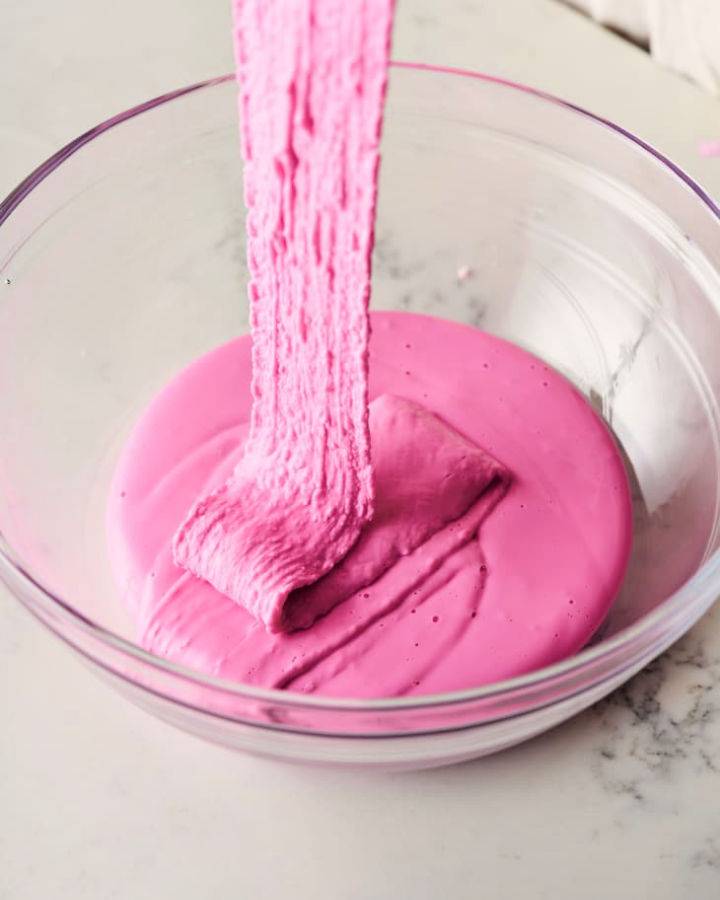
Discover an amazingly simple way to make slime without glue! Check out this fun, mess-free recipe using just shampoo, water, and cornstarch. Ideal for a quick clean-up, this three-ingredient slime ensures an enjoyable playtime, even in the bathtub! For a detailed guide, click on this link: The Kitchn. Perfect for creative fun without the sticky hassle.
13. DIY Galaxy Slime on Budget
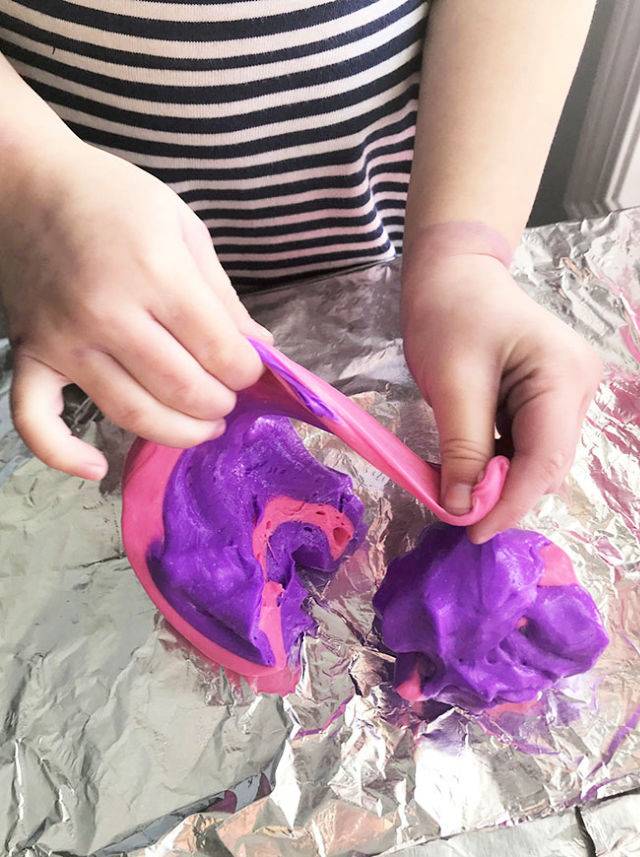
Discover the magic of crafting Galaxy Slime with Spirited and Then Some. Perfect for keeping kids entertained, this DIY slime provides hours of sensory play. The recipe is simple, versatile, and foolproof, turning your kitchen into a mini cosmic laboratory. Say yes to creativity and fine motor skill development as you dive into the universe of Galaxy Slime-making. Whether it's a rainy day or a fun weekend project, this shimmering, stretchy slime promises out-of-this-world fun!
14. Make Your Own Fluffy Slime
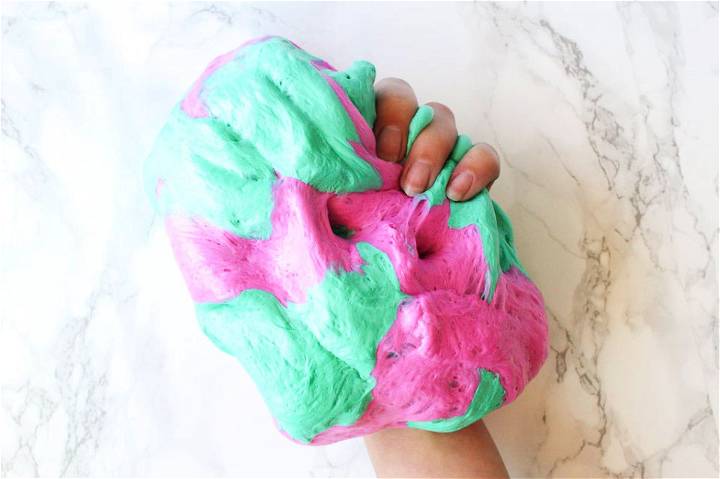
Transform your leisure time into a creative session by learning how to craft fluffy slime! Easy, fun, and perfect for all ages, this instructive guide at Instructables walks you through each step with clear, engaging instructions. Uncover the secrets of making the fluffiest slime that not only entertains but sparks creativity. Ideal for craft enthusiasts seeking a delightful project.
15. How to Make a Play-Doh Slime
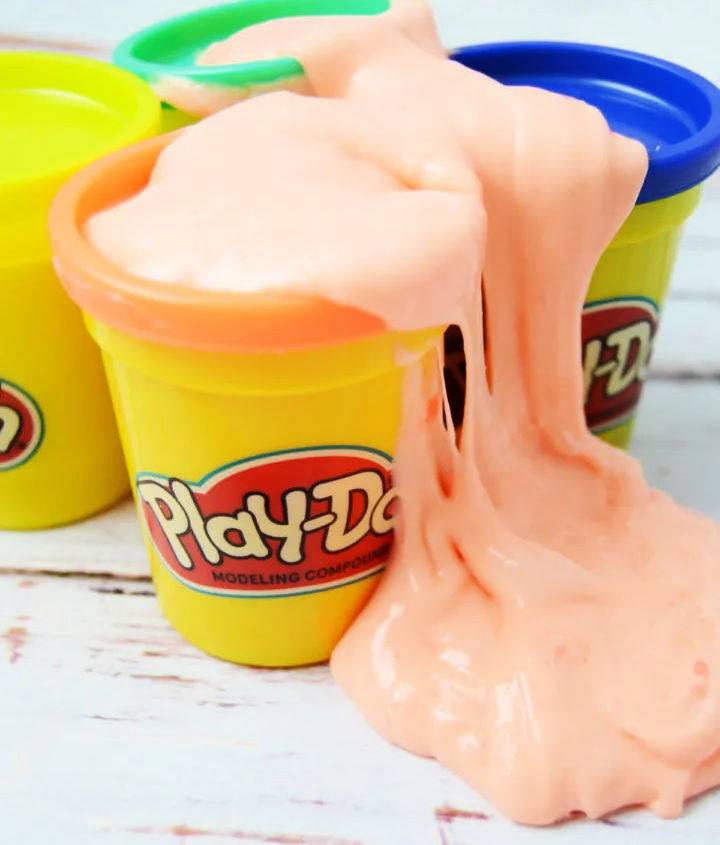
Discover the joy of making easy Play-Doh slime without Borax! Perfect for keeping kids entertained, this simple recipe guarantees hours of fun. No crafting experience? No problem! This kid-friendly activity is straightforward and requires only a few common ingredients. Follow our step-by-step guide to mix up a batch of stretchy, satisfying slime. It’s a fantastic way to engage little ones in creative play. Start this delightful crafting adventure today and keep those tiny hands busy!
16. Best Oobleck Slime Recipe

Ready to dive into a magical, messy, and marvelous adventure that even grown-ups can get nostalgic about? Try your hand at making Oobleck slime—a fascinating substance that's both a liquid and a solid! Perfect for a fun science experiment or just a playful afternoon, Oobleck is the answer to your child's plea for slime, minus the questionable ingredients.
With just cornstarch, water, and an optional splash of food coloring, you can whip up this mesmerizing slime in no time. It's a safe, borax-free alternative that promises loads of tactile fun. For the full recipe and tips on how to make your Oobleck experience unforgettable, click here.
17. How to Make 3 Ingredients Slime
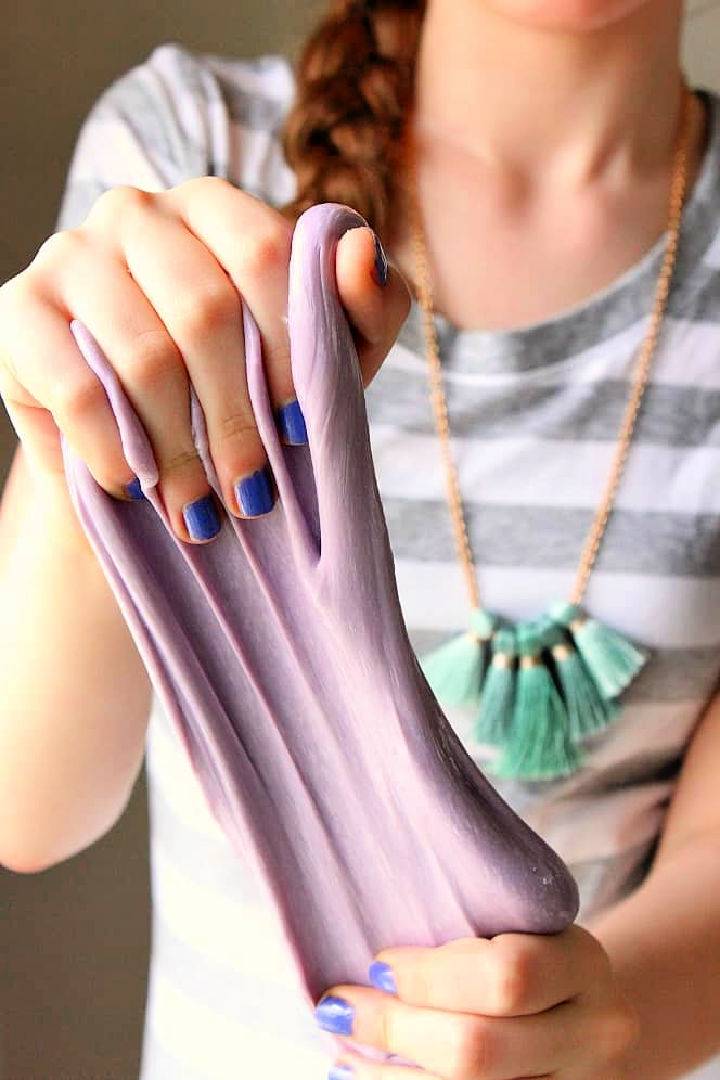
Dive right into crafting with our simple 3-Ingredient Slime DIY! It’s fuss-free, safe, and fun - perfect for a creative afternoon. All it takes is white school glue, baking soda, and contact solution.
No Borax involved! Easy to source from stores like Target or Walmart, this project promises a great time for kids. For an additional touch of magic, explore our Galaxy in a Jar idea. Enjoy crafting without the worry, using readily available ingredients. Make, play, and store effortlessly. Start making memorable moments today!
18. Make Your Own Color-Changing Slime
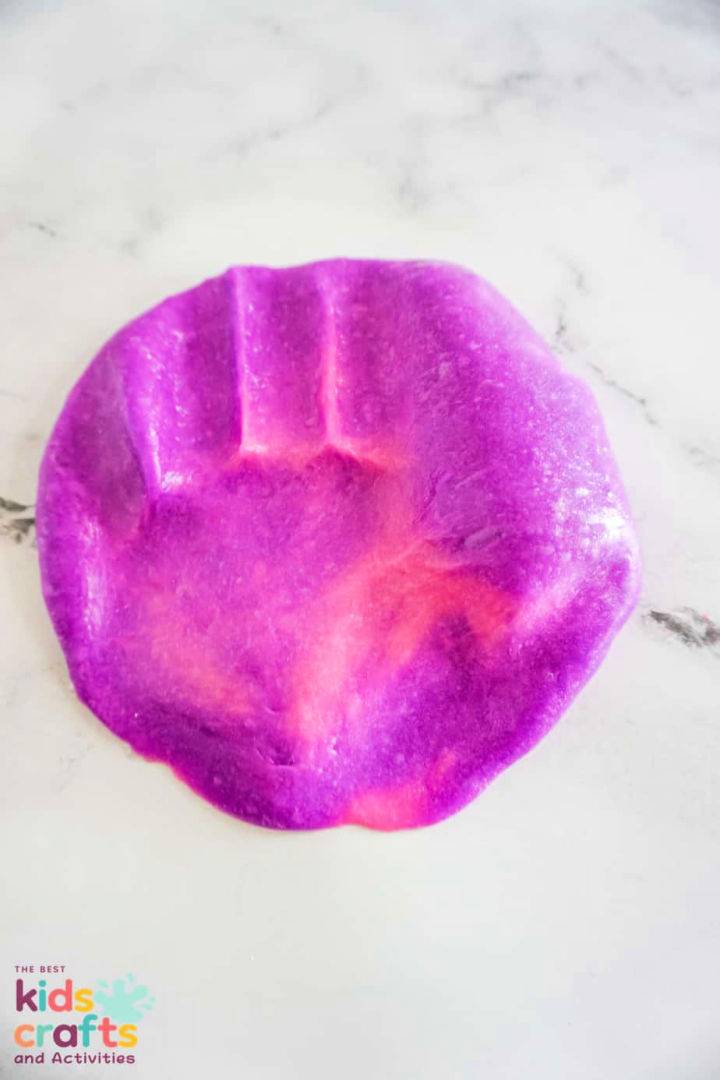
Experience the magic of color changing slime! This engaging activity not only captivates the imagination but also introduces kids to Thermochromism through a hands-on science experiment. Perfect for those curious minds, the process involves Thermochromic Pigment, which reacts to different temperatures, making the slime transition between colors.
It’s a fantastic way to merge fun and education, teaching about temperature effects in a playful manner. For a detailed guide on making this fascinating slime, visit thebestkidscraftsandactivities.com. Dive into this colorful, temperature-sensitive adventure and watch as the slime comes to life in your hands!
19. Easy DIY Slime Without Borax
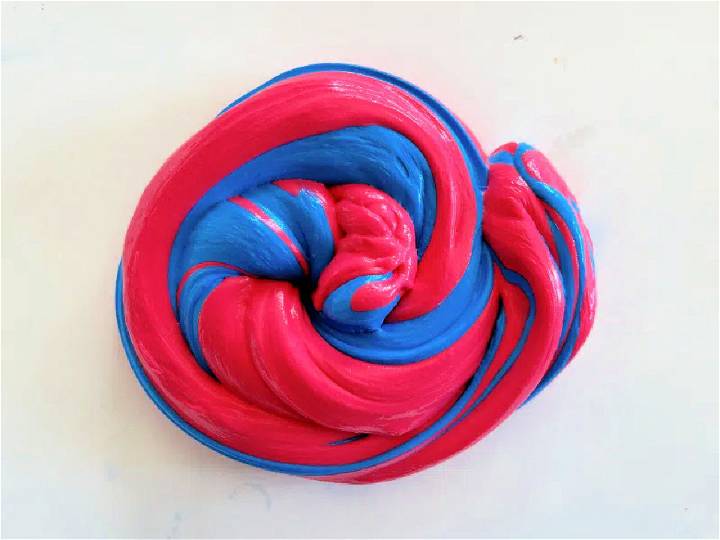
Looking to craft slime without borax? Check out our ultimate butter slime recipe for a delightfully soft and stretchable experience. Perfect for kids and adults alike, this tutorial offers step-by-step instructions, ensuring a fun and successful slime-making session. Say goodbye to sticky mishaps or dried-out disappointments with our tried and true recipe. Dive into our video tutorial for hands-on guidance, and discover the joy of crafting your very own butter slime today.
20. DIY Slime With a Real Pumpkin
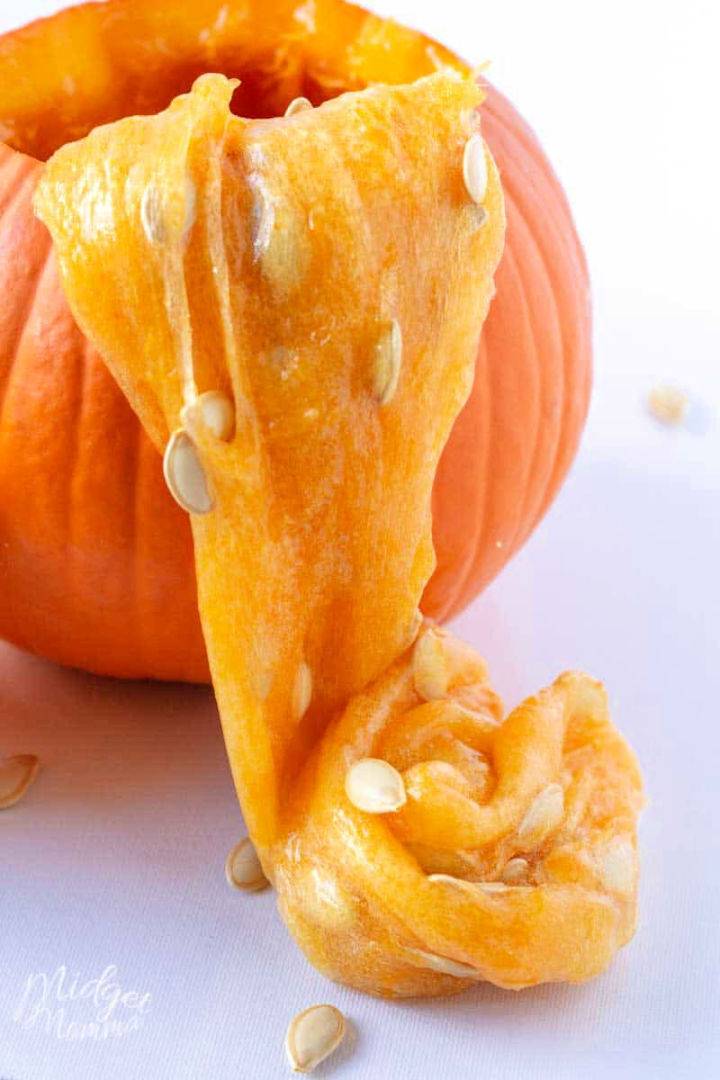
Dive into the festive spirit by making unique pumpkin slime with your kids! Perfect for fall, this craft turns the often-discarded pumpkin guts into hours of fun. Simple to make, this activity combines creativity with seasonal traditions. Head over to MidgetMomma for an easy-to-follow recipe that's ideal for a cozy day in. So, carve out some quality time and enjoy crafting this gooey delight that promises not just excitement but a memorable learning experience for your little ones.
21. Homemade Fluffy Slime
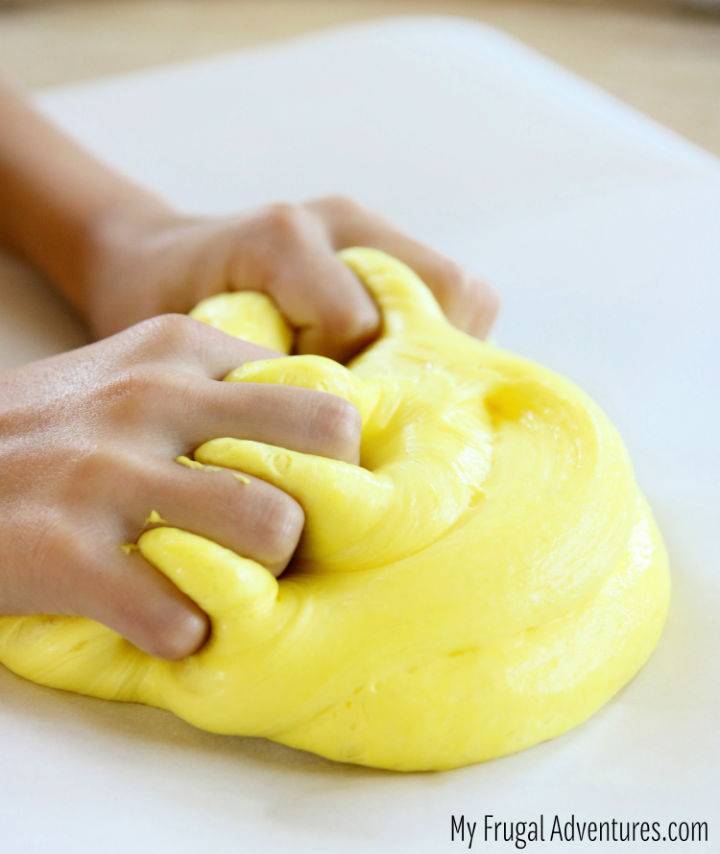
Eager to delight your kids with a safe, Borax-free slime activity? Discover a delightful guide on how to make fluffy slime without Borax, courtesy of My Frugal Adventures. This easy-to-follow tutorial needs just four ingredients, including the magic of shaving cream, to make a softer, lighter version of everyone's favorite gooey craft. With helpful tips and a step-by-step video, this recipe ensures a fun and successful slime-making experience. Start crafting this fluffy, fun slime with your kids today – they are sure to love it!
22. How to Make a Slime
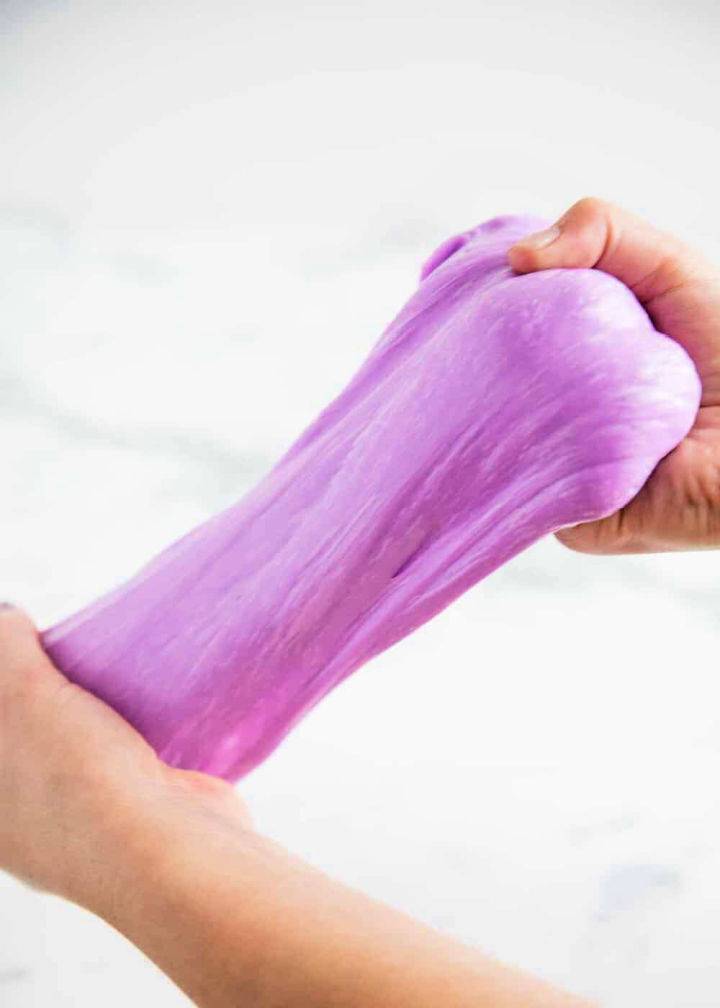
Discover the simplest way to bring delight to your kids with an easy homemade slime recipe from I Heart Naptime. With just 3 main ingredients, this quick craft not only promises endless hours of fun but also is friendly on your wallet. Ideal for an indoor day, this recipe is a hit amongst kids, reminiscent of the beloved Gak.
It's engaging, easy to make, and perfect for customizing with various mix-ins. Dive into making this playful slime and watch your kids marvel at their own colorful creations. Perfect for parents seeking a fun and affordable activity, this slime recipe guarantees a joy-filled time for the family!
23. Easy Fluffy Slime Recipe
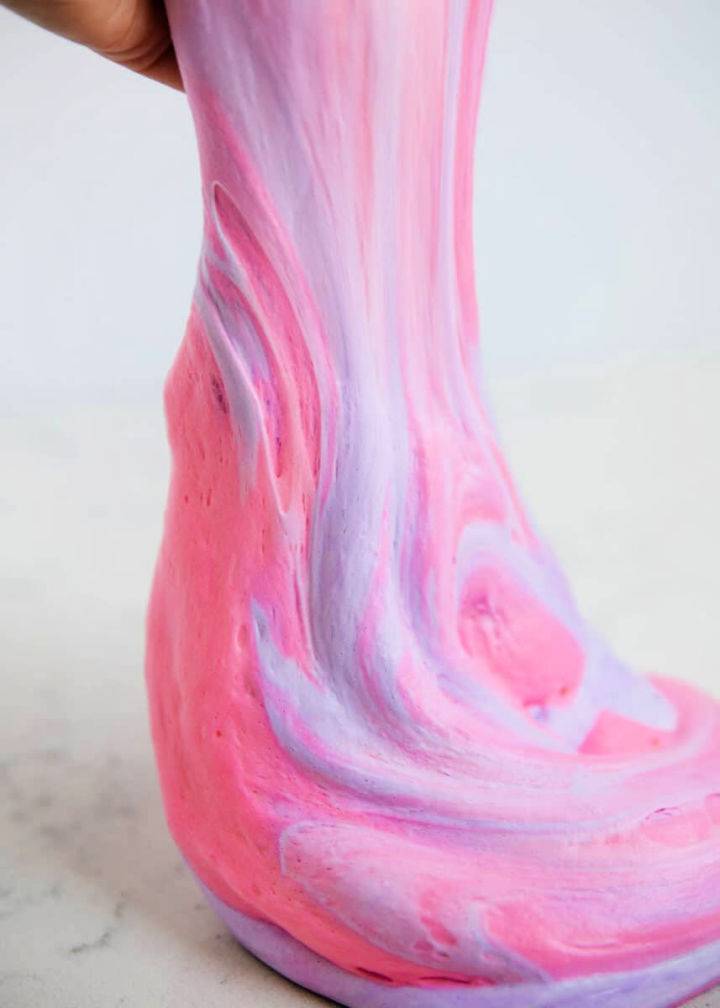
Looking for a fun and easy indoor activity for kids? I Heart Naptime offers a fantastic guide on how to craft super soft and stretchy fluffy slime with just 3 ingredients! Perfect for rainy days or anytime your kids need an engaging project, this recipe promises hours of fun.
It's wonderfully simple, requiring less than 5 minutes to whip up a batch of this magical substance. Plus, it's made without borax, making it a safer option for little hands. Ready to dive into the squishy, colorful world of slime making? Follow this straightforward tutorial for an afternoon filled with creative play!
24. Handmade Fluffy Cloud Slime
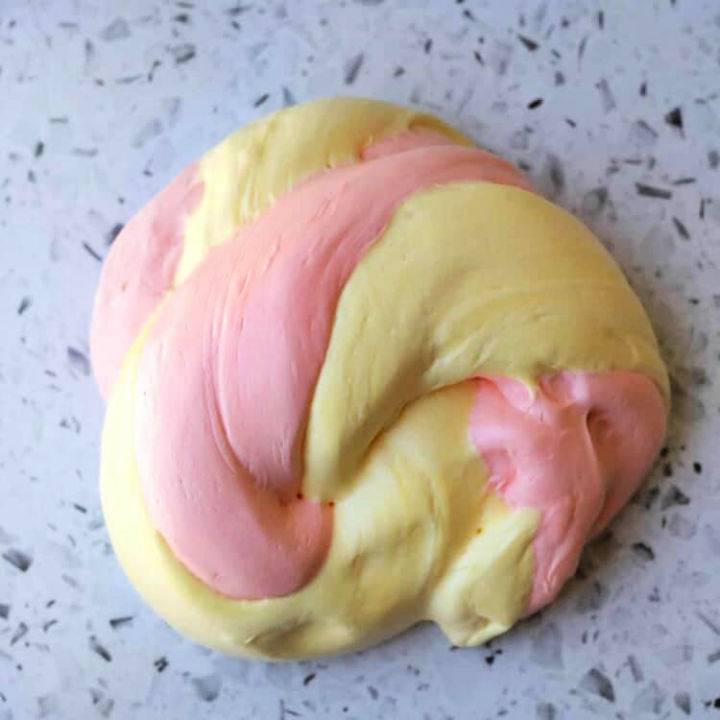
Unveil the joy of crafting your very own Fluffy Cloud Slime with this engaging and easy-to-follow guide! Known for its puffy texture and delightful marshmallow consistency, Fluffy Slime is not just an ordinary craft; it's a sensory adventure perfect for kids and adults alike.
By adding just a smidge of shaving cream to the mix, you transform simple slime into an extraordinary playful experience. For comprehensive instructions, including a charming variety of other slime recipes, hop over to ChildhoodMagic.com. Delight in the creativity and ensure your fluffy slime stays fresh with proper storage tips provided. Dive into slime-making today and make unforgettable memories!
25. Fluffy Slime Recipe With Unicorn Colors
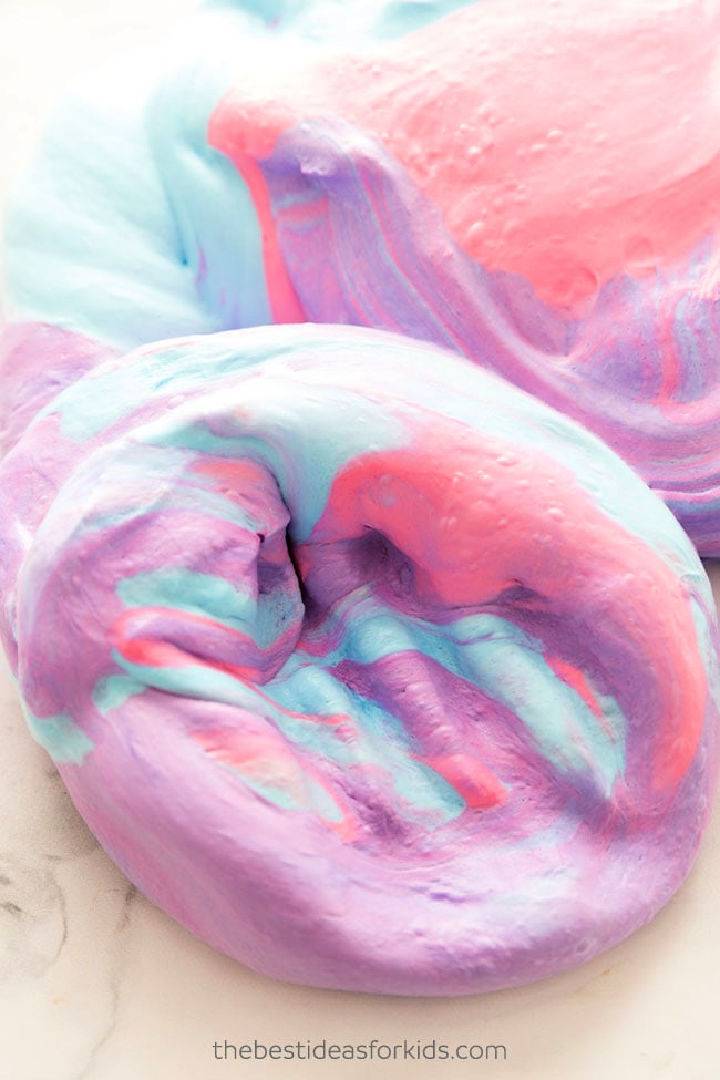
Dive into a world of playful texture and color with this easy-to-follow Fluffy Slime Recipe. Perfect for a fun family activity, this recipe guarantees a fluffy, stretchable creation that kids will adore squishing and stretching. Safety is paramount, so adult supervision is recommended during the slime-making process.
Explore how to mix your ideal slime with just the right amount of shaving cream for that perfect fluffy texture. Plus, for those who love a dash of whimsy, transforming your slime into vibrant unicorn colors adds an extra layer of fun. Don't forget, this fluffy concoction makes for a fantastic sensory play experience but remember it's best enjoyed fresh!
Conclusion:
In conclusion, exploring 25 homemade slime recipes to try provides a fun and creative way to engage with science from the comfort of your home. From basic ingredients to innovative combinations, making slime can be a fascinating activity for those looking to experiment with textures and colors.
Remember to follow the steps closely, from making your slime activator to storing your final product properly. With these tips on how to make slime, you'll surely make something unique and entertaining. So, grab your ingredients and get ready to dive into the squishy, stretchy world of homemade slime.


